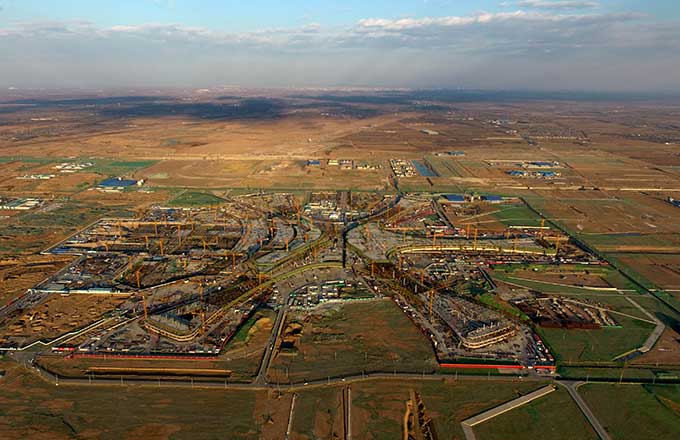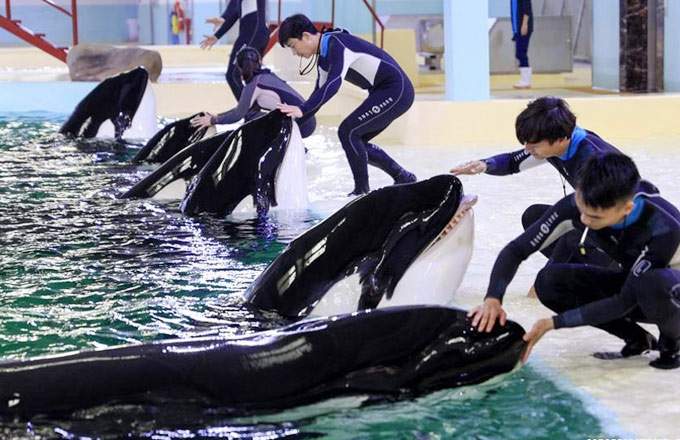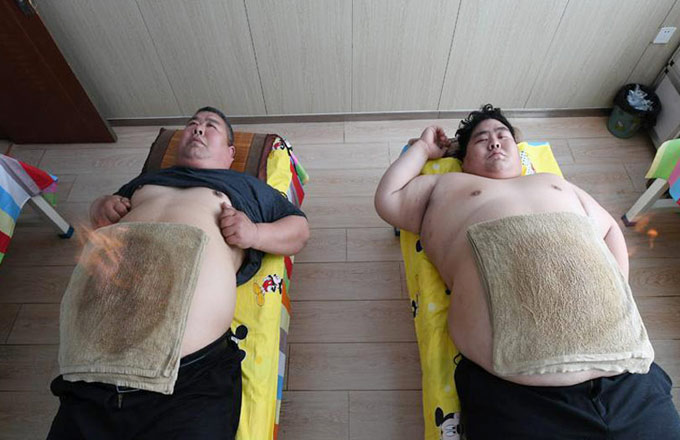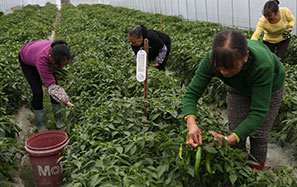Local legislative meetings raise expectations for China's growth
BEIJING ?-- China's resort island province of Hainan aimed to achieve growth of over 7 percent this year, after a 7.5-percent expansion in 2016, as its legislative session closed Friday.
Like Hainan, 20 other provinces, autonomous regions and municipalities lowered or maintained their growth targets this year, indicating the basic tone of "seeking progress while maintaining stability" as set by the central economic work conference in December.
To date, all provincial-level regions have concluded their annual meetings for local lawmakers and political advisors.
The new measures in reform, opening up and structural adjustment announced at local sessions have raised high expectations for the annual sessions of China's top legislature, the National People's Congress (NPC), and the top political advisory body, Chinese People's Political Consultative Conference, in March.
The two meetings are among the most important political events in China,second only to the 19th National Congress of Communist Party of China (CPC) later this year, at which a new leadership of the Party will be elected.
The people's congress system, the country's political basis, has been in place for over six decades at the national, provincial, prefectural, county and township levels.
The NPC has nearly 3,000 deputies from provinces, autonomous regions, municipalities, Hong Kong and Macao special administrative regions, and the People's Liberation Army. Its annual session deliberates and approves the economic and social development plan among other major policies, laws and regulations.
The new economic growth target to be announced at the opening meeting of the legislative session on March 5 will be of note.
China's economy has been continuing its slowdown trend. It reported 6.7 percent GDP growth in 2016, the lowest level in nearly three decades, but likely to top all other major economies. China aims to achieve average annual growth of more than 6.5 percent over the 2016 to 2020 period.
A framework of "new normal" is being introduced to inject new vitality into the economy and ensure more balanced growth.
The provincial growth targets in 2017 will leave room for governments to push on with transformation and supply-side structural reform, including slashing overcapacity in sectors like coal and steel. All these are critical for China to achieve a sustained and healthy economic growth.
Coal-rich Shanxi and central Henan both aim to cut 20 million tonnes of coal capacity this year, after each slashed 23 million tonnes last year.
Hebei, which neighbors Beijing and produces a quarter of the country's iron and steel, aims to further slash 32 million tonnes of steel capacity this year, after a similar level of reduction in 2016.
"This year will be our toughest for capacity reduction. No matter how difficult it is, we are determined to succeed," said Hebei Governor Zhang Qingwei.
Environmental protection is another key item on the agenda, with new pollution treatment targets and measures included in local government work plans.
Beijing, a frequent victim of smog, aims to cut its PM2.5 density by 18 percent to 60 micrograms per cubic meter of air this year, at a planned cost of 18 billion yuan ($2.6 billion dollars).
China's opening-up is expected to gain new momentum this year, as the provinces and municipalities with free trade zones (FTZs) push forward and refine the FTZ system.
There will also be more projects under the Belt and Road Initiative.
Commodity and service centers will be set up in Shanghai this year to boost trade with countries along the Belt and Road. The city signed construction contracts worth 8.9 billion dollars with countries along the ancient trade route last year, up 66 percent year on year.
Moreover, southwestern Sichuan province plans to double the frequency of cargo trains bound for Europe to 1,000 this year. Foreign investment into the inland province hit 8.5 billion dollars in 2016, featuring projects from 17 of the world's top 500 companies.
"China is opening wider to the outside world and it is paying off with win-win results for all those involved," said Xu Yaotong, a professor from the Chinese Academy of Governance.
Reviving the real economy was a hot topic at the local sessions of provincial lawmakers.
Zhejiang Vice Governor Feng Fei said the province would help lower the costs for companies this year so that more resources can be distributed to the real economy.
Poverty alleviation remains a pressing task. Southwestern Yunnan province will bring 1 million of the 3.5 million poor people above the poverty line in 2017.
To achieve "Xiaokang," or a moderately prosperous society in an all-round way, by 2020, this year China will help another 10 million people out of over 45.7 million get rid of poverty.
New government heads of at least 11 provincial-level regions, including Beijing and Shanghai, were elected at the local sessions. These regions' combined GDP exceeds that of Germany.
Notably, local two sessions also stressed the "four consciousnesses" -- the ideology, the whole, the core and the line.
Xi Jinping, general secretary of the CPC Central Committee, was endorsed as the core leader at the Sixth Plenary Session of the 18th CPC Central Committee in late October.
"It is natural to stress the concept. The centralized and unified leadership is gaining consensus," said Dai Yanjun, of the Party School of the CPC Central Committee.

























